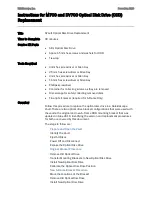
Table 31 ProtectPoint connections (continued)
Connected Components
Connection Type
Secondary VMAX array to secondary Data Domain system
(optional)
FC SAN
Primary Application Host to secondary Data Domain system
(optional)
IP WAN
Primary Data Domain system to secondary Data Domain
system (optional)
IP WAN
The following list describes the hosts and devices in a ProtectPoint solution:
Production Host
The host running the production database application. The production host sees
only the production VMAX3 devices.
Recovery Host
The host available for database recovery operations. The recovery host can
include direct access to:
l
A backup on the recovery devices (vDisk devices encapsulated through
FAST.X), or
l
Access to a backup copy of the database on the restore devices (native
VMAX3 devices).
Production Devices
Host devices available to the production host where the database instance
resides. Production devices are the source devices for the TimeFinder/SnapVX
operations that copy the production data to the backup devices for transfer to
the Data Domain.
Restore Devices
Native VMAX3 devices used for full LUN-level copy of a backup to a new set of
devices is desired. Restore devices are masked to the recovery host.
Backup Devices
Targets of the TimeFinder/SnapVX snapshots from the production devices.
Backup devices are VMAX3 thin devices created when the Data Domain vDisk
backup LUNs are encapsulated.
Recovery Devices
VMAX3 devices created when the Data Domain vDisk recovery LUNs are
encapsulated. Recovery devices are presented to the recovery host when the
Application administrator performs an object-level restore of specific database
objects.
ProtectPoint and traditional backup
The ProtectPoint workflow can provide data protection in situations where more
traditional approaches cannot successfully meet the business requirements. This is
often due to small or non-existent backup windows, demanding recovery time
objective (RTO) or recovery point objective (RPO) requirements, or a combination of
both.
Open systems features
62
Product Guide
VMAX 100K, VMAX 200K, VMAX 400K with HYPERMAX OS
Содержание VMAX 100K
Страница 1: ...EMC VMAX3 Family Product Guide VMAX 100K VMAX 200K VMAX 400K with HYPERMAX OS REVISION 6 5 ...
Страница 20: ...Preface 20 Product Guide VMAX 100K VMAX 200K VMAX 400K with HYPERMAX OS ...
Страница 46: ...VMAX3 with HYPERMAX OS 46 Product Guide VMAX 100K VMAX 200K VMAX 400K with HYPERMAX OS ...
Страница 72: ...Open systems features 72 Product Guide VMAX 100K VMAX 200K VMAX 400K with HYPERMAX OS ...
Страница 82: ...Provisioning 82 Product Guide VMAX 100K VMAX 200K VMAX 400K with HYPERMAX OS ...
Страница 100: ...Native local replication with TimeFinder 100 Product Guide VMAX 100K VMAX 200K VMAX 400K with HYPERMAX OS ...
Страница 158: ...Remote replication solutions 158 Product Guide VMAX 100K VMAX 200K VMAX 400K with HYPERMAX OS ...
Страница 186: ...Mainframe Error Reporting 186 Product Guide VMAX 100K VMAX 200K VMAX 400K with HYPERMAX OS ...
Страница 200: ...Licensing 200 Product Guide VMAX 100K VMAX 200K VMAX 400K with HYPERMAX OS ...
















































